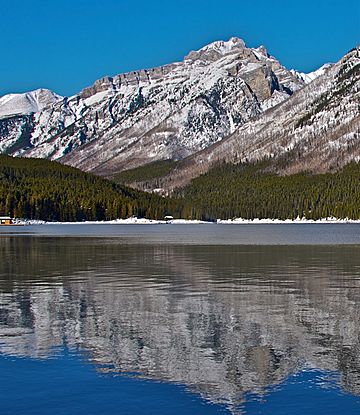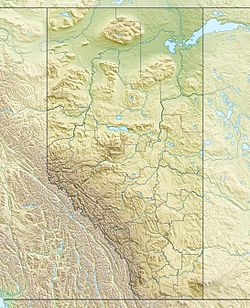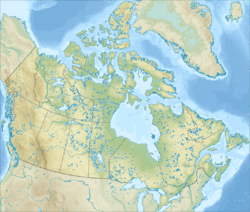Mount Astley facts for kids
Quick facts for kids Mount Astley |
|
|---|---|

Mount Astley reflected in Lake Minnewanka
|
|
| Highest point | |
| Elevation | 2,869 m (9,413 ft) |
| Listing | Mountains of Alberta |
| Geography | |
| Location | Banff National Park Alberta, Canada |
| Parent range | Palliser Range Canadian Rockies |
| Topo map | NTS 82O/06 |
| Climbing | |
| Easiest route | Scramble |
Mount Astley is a tall mountain in the Canadian Rockies. It stands 2,869-metre (9,413-foot) high. You can find it in Banff National Park in Alberta, Canada. The mountain is located right above Lake Minnewanka.
Mount Astley was named after Charles D'Oyley Astley. He was a person who managed the boat rentals and tours on Lake Minnewanka in the late 1800s.
How Mount Astley Formed (Geology)
Mount Astley is made of sedimentary rock. This type of rock forms from layers of sand, mud, and tiny bits of sea creatures that settle over millions of years. These layers were laid down during ancient times, from the Precambrian to the Jurassic periods.
Over time, powerful forces deep within the Earth pushed these rock layers. This movement, called the Laramide orogeny, caused the rocks to fold and lift up. This is how Mount Astley and many other mountains in the Rockies were created.
Weather at Mount Astley (Climate)
Mount Astley has a subarctic climate. This means it has very cold and snowy winters. Summers are usually mild, not too hot.
Temperatures can drop below −20 °C (which is −4 °F). With the wind, it can feel even colder, sometimes below −30 °C (−22 °F). The snow and rain that fall on Mount Astley eventually flow into small streams. These streams then join larger rivers, like the Bow River.



